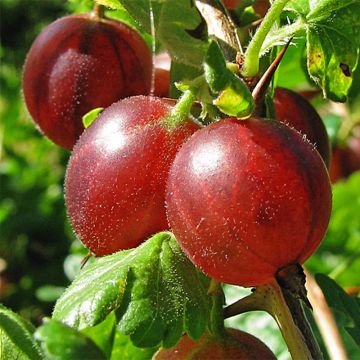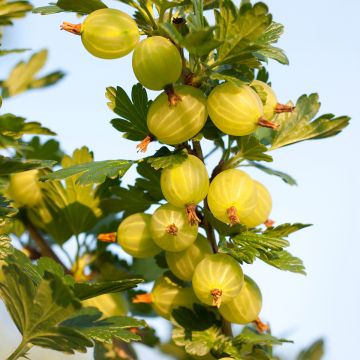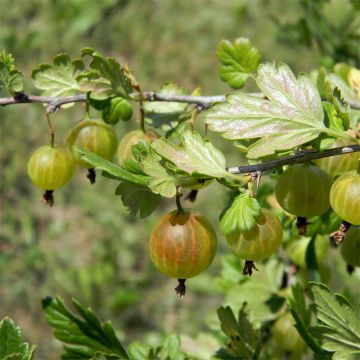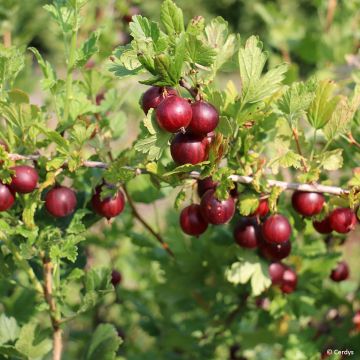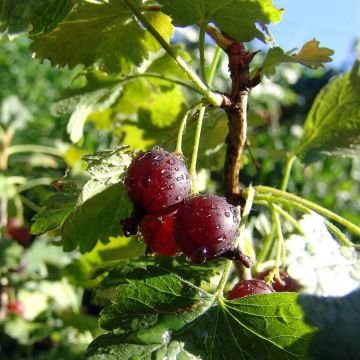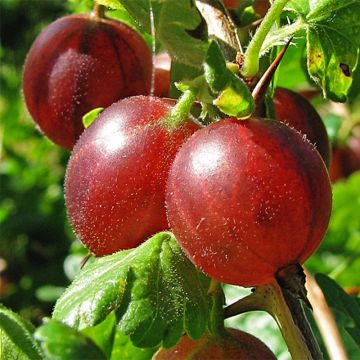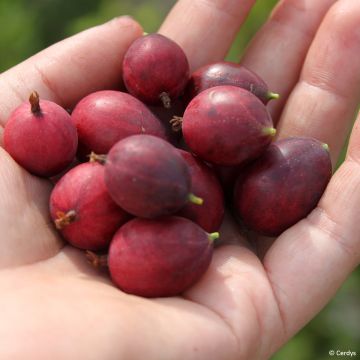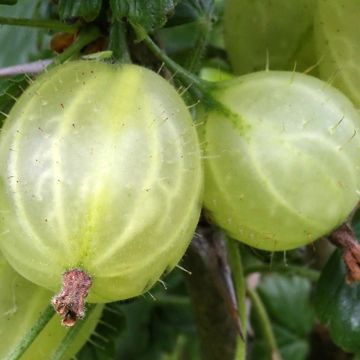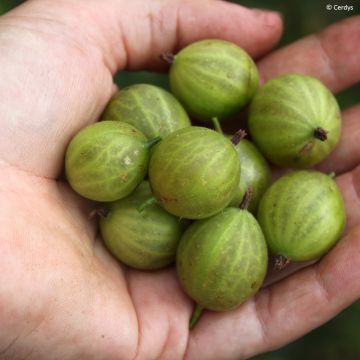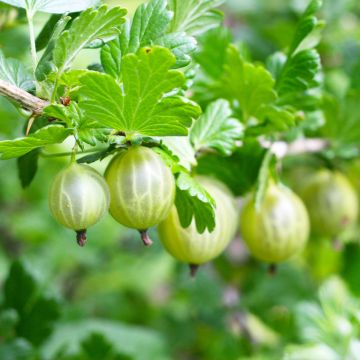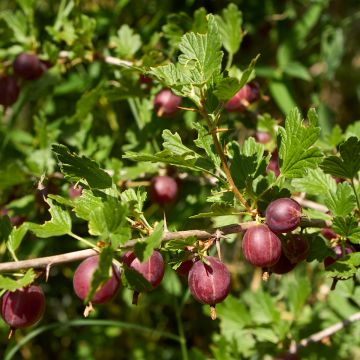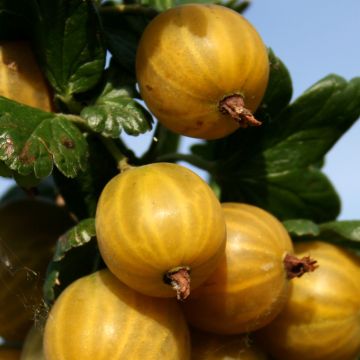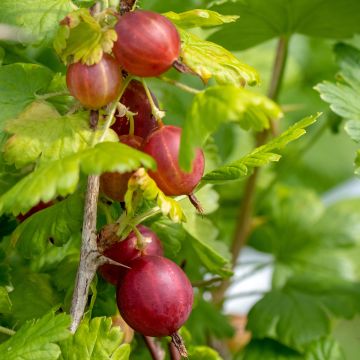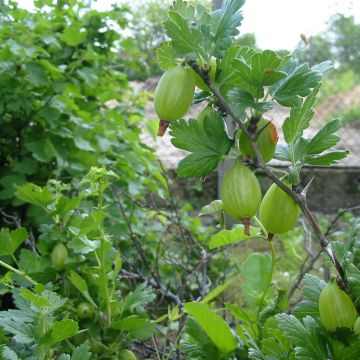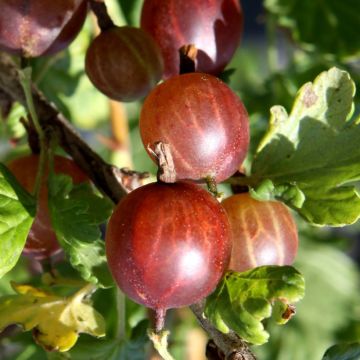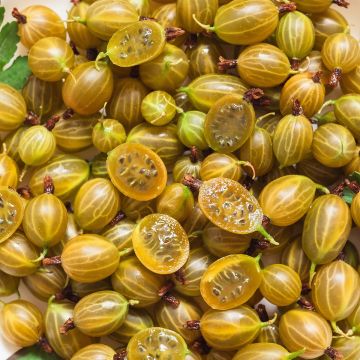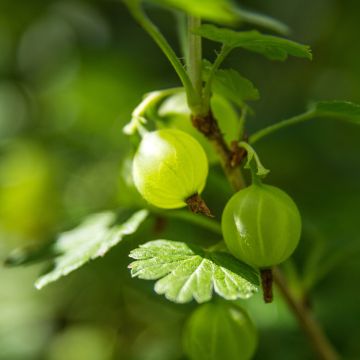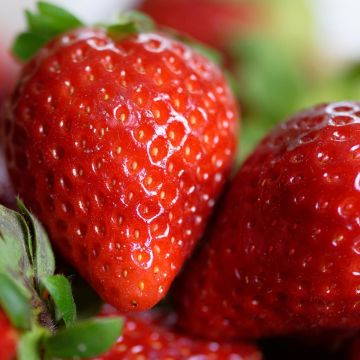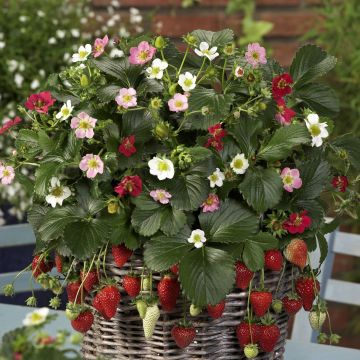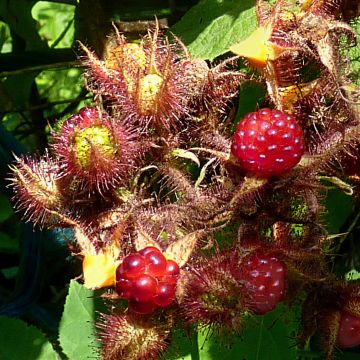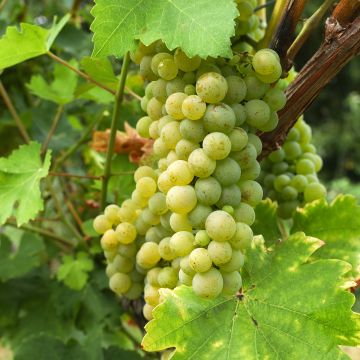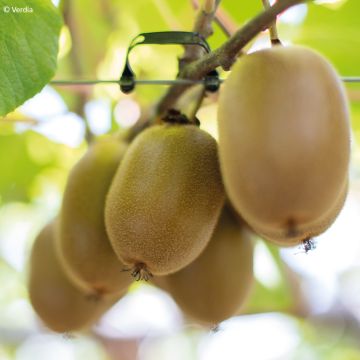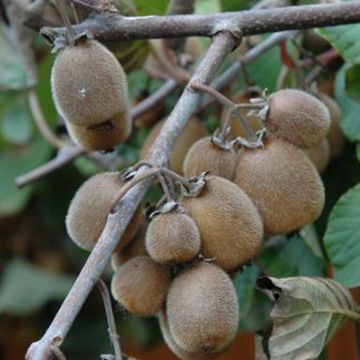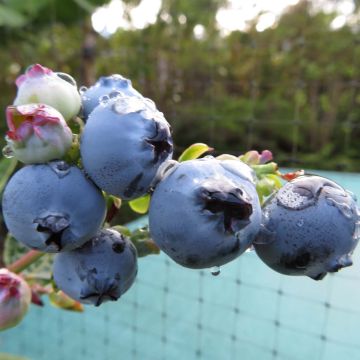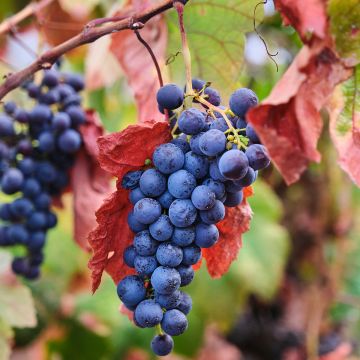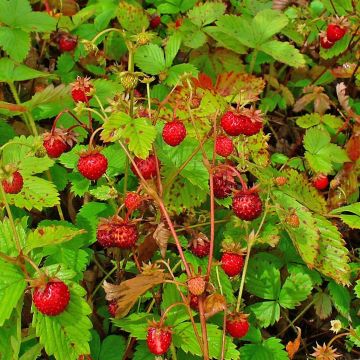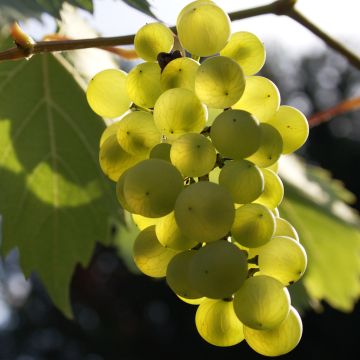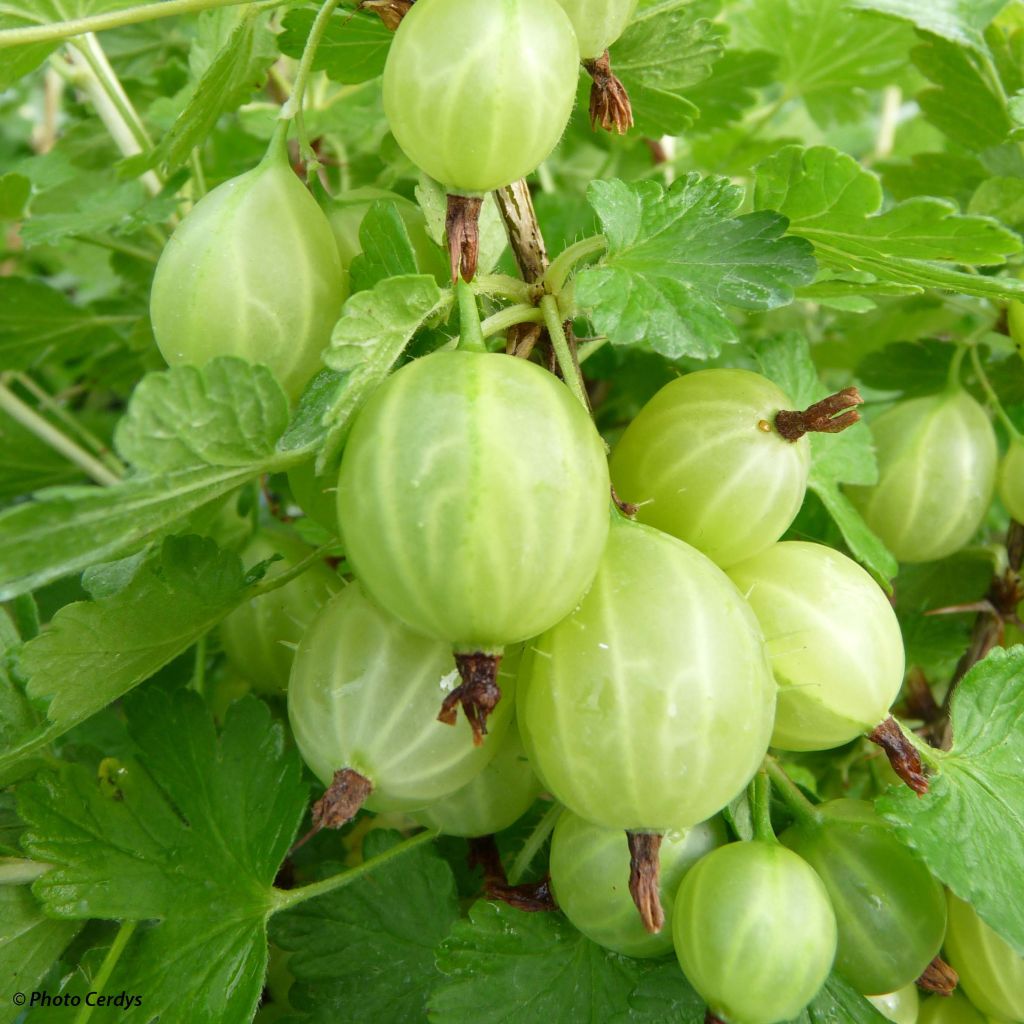

Groseillier à maquereau Lady Sun
Gooseberry Easycrisp Lady Sun - Ribes uva-crispa
Ribes uva-crispa Lady Sun
Gooseberry
Nice plan, but still quite thorny.
Bernard, 28/02/2021
Why not try an alternative variety in stock?
View all →This plant carries a 6 months recovery warranty
More information
We guarantee the quality of our plants for a full growing cycle, and will replace at our expense any plant that fails to recover under normal climatic and planting conditions.
From €5.90 for pickup delivery and €6.90 for home delivery
Express home delivery from €8.90.
Description
Ribes uva-crispa Lady Sun is a vigorous variety that is highly productive and disease-resistant. It produces large, translucent, yellow-green fruits with a slightly acidic flavour. It develops very few thorns, making it easy to pick. This bushy plant is easy to cultivate, but it is sensitive to drought. The delicious berries are ideal for making jams, jellies and pies, or as accompaniments to meat and fish. Plant from October to March for a harvest starting from late July.
Cultivated in northern Europe since the 16th century, Ribes uva-crispa is a fertile hybrid resulting from cross-breeding between two species native to Europe and North Africa, still found in mountainous forests in Scotland, France, and the Caucasus. It belongs to the Grossulariaceae family, like red currants (Ribes rubrum). This bush resembles classic currants, but differs mainly in terms of the fruits. They are larger, with a sweet flavour, and appear solitarily along the branches, unlike clustered currants.
It is a bushy shrub, branching from the base, reaching a height of 1m (3ft) with a spread of 75 cm (30in). Its deciduous leaves are toothed and pubescent, ranging from bright green to medium green. Apart from a few inermous varieties, it has thorny stems. In spring, it is adorned with tiny, honey-scented, white-green flowers. These will transform into round to oval translucent berries, 1.5cm (1in) in diameter, distributed along the branches. Depending on the variety, these berries can be red, white, or yellow-green, as is the case with Lady Sun. The fruits are harvested when fully ripe, easily detaching from their support. The harvest is approximately 3 to 4 kg per plant.
Gooseberries are low in sugar, and therefore low in calories. They are rich in vitamins C, A, and B, as well as certain minerals (calcium, iron, potassium, phosphorus). The fruit boasts diuretic, digestive, liver decongestant, and laxative properties, provided it is consumed when barely ripe. Gooseberries can be enjoyed freshly picked, consumed in desserts (pies, jams, jellies), or savoury dishes (accompanying meats, fish). In Nordic countries, gooseberry juice was once used to prepare a sweet and sour sauce that accompanied mackerel dishes.
In the garden, it can be planted in a small edible hedge, mixed with currants and raspberries. This would be ideal for bordering a vegetable garden, for example. It is a very hardy shrub that is easy to cultivate, but is sensitive to drought.
Report an error about the product description
Gooseberry Easycrisp Lady Sun - Ribes uva-crispa in pictures
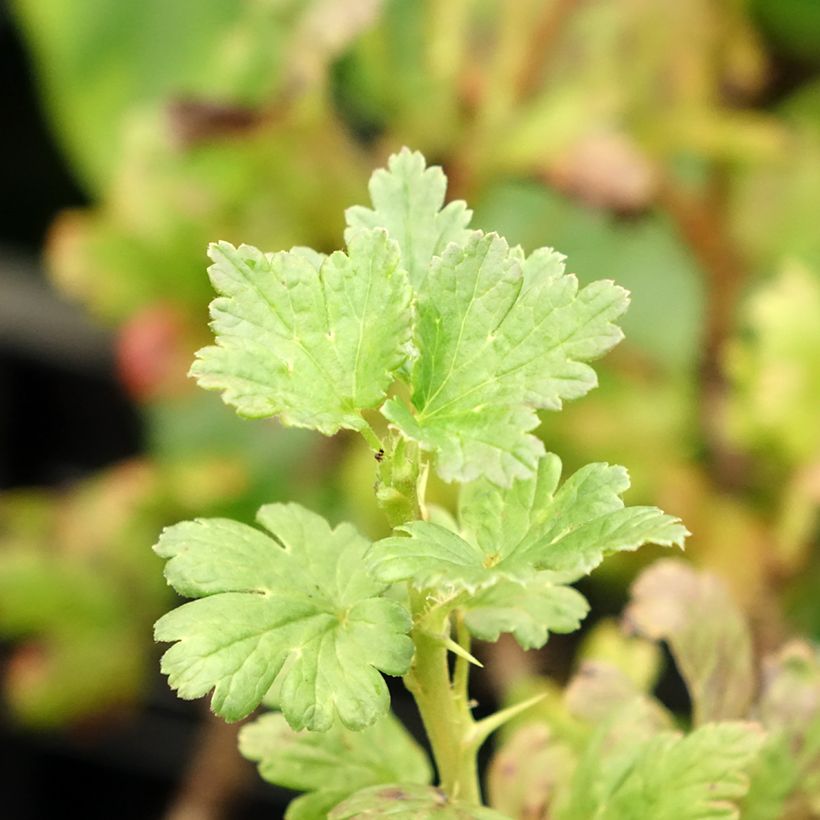

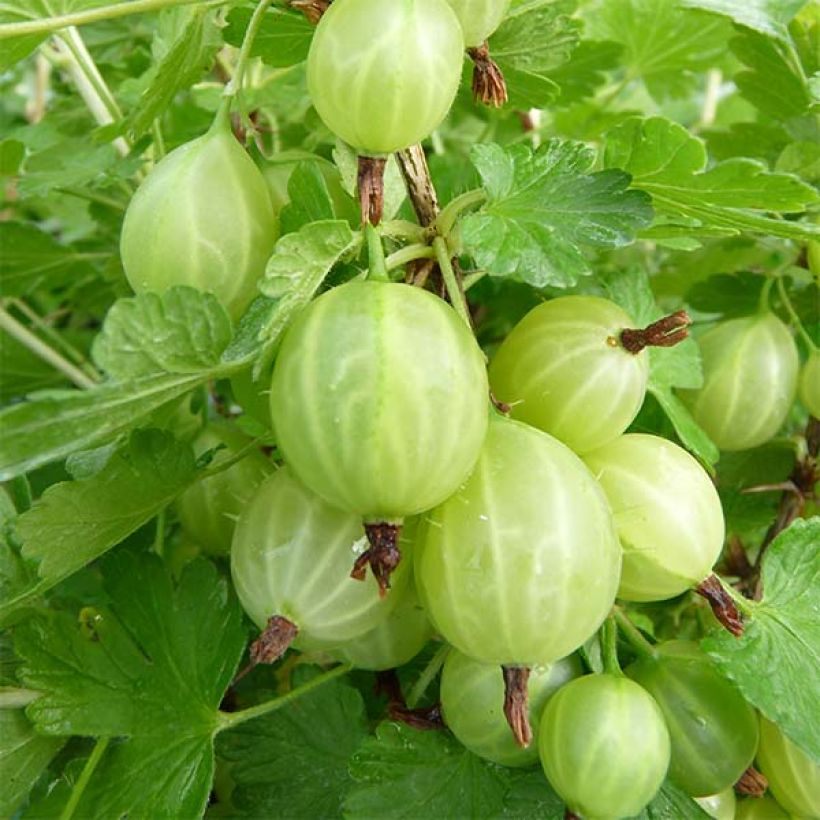

Plant habit
Fruit
Flowering
Foliage
Botanical data
Ribes
uva-crispa
Lady Sun
Grossulariaceae
Gooseberry
Cultivar or hybrid
Other Gooseberry bush
Planting and care
It thrives in cool, loose, and fertile soils with a tendency towards acidity. It prefers non-burning sunlight in cool regions and partial shade in warmer climates. It cannot withstand extreme heat and drought, showing a clear preference for cool climates and mountainous regions.
When planted as a hedge, space them every 2m (7ft). Plant from October to March. Soak the root ball in water for a few moments before planting. Dig a hole, mix the soil with well-rotted compost or potting soil, place the root ball, and cover with soil. Firmly press the soil and water generously. Use mulch at the base to retain moisture in summer. Water regularly during periods of high heat.
It is susceptible to attacks from aphids and mites, which can be eliminated by spraying with black soap or a garlic decoction. It is also susceptible to fungal diseases, such as anthracnose (brown spots on leaves and fruits), powdery mildew (white powdery growth), grey mould (white then brown growth on berries), and rust (orange pustules on the underside of leaves). Regularly spray with comfrey or nettle manure, or a horsetail decoction. Remove and burn all diseased parts. In June-July, protect the harvest with nets to deter birds.
Planting period
Intended location
Care
-
, onOrder confirmed
Reply from on Promesse de fleurs
Berries
Haven't found what you were looking for?
Hardiness is the lowest winter temperature a plant can endure without suffering serious damage or even dying. However, hardiness is affected by location (a sheltered area, such as a patio), protection (winter cover) and soil type (hardiness is improved by well-drained soil).

Photo Sharing Terms & Conditions
In order to encourage gardeners to interact and share their experiences, Promesse de fleurs offers various media enabling content to be uploaded onto its Site - in particular via the ‘Photo sharing’ module.
The User agrees to refrain from:
- Posting any content that is illegal, prejudicial, insulting, racist, inciteful to hatred, revisionist, contrary to public decency, that infringes on privacy or on the privacy rights of third parties, in particular the publicity rights of persons and goods, intellectual property rights, or the right to privacy.
- Submitting content on behalf of a third party;
- Impersonate the identity of a third party and/or publish any personal information about a third party;
In general, the User undertakes to refrain from any unethical behaviour.
All Content (in particular text, comments, files, images, photos, videos, creative works, etc.), which may be subject to property or intellectual property rights, image or other private rights, shall remain the property of the User, subject to the limited rights granted by the terms of the licence granted by Promesse de fleurs as stated below. Users are at liberty to publish or not to publish such Content on the Site, notably via the ‘Photo Sharing’ facility, and accept that this Content shall be made public and freely accessible, notably on the Internet.
Users further acknowledge, undertake to have ,and guarantee that they hold all necessary rights and permissions to publish such material on the Site, in particular with regard to the legislation in force pertaining to any privacy, property, intellectual property, image, or contractual rights, or rights of any other nature. By publishing such Content on the Site, Users acknowledge accepting full liability as publishers of the Content within the meaning of the law, and grant Promesse de fleurs, free of charge, an inclusive, worldwide licence for the said Content for the entire duration of its publication, including all reproduction, representation, up/downloading, displaying, performing, transmission, and storage rights.
Users also grant permission for their name to be linked to the Content and accept that this link may not always be made available.
By engaging in posting material, Users consent to their Content becoming automatically accessible on the Internet, in particular on other sites and/or blogs and/or web pages of the Promesse de fleurs site, including in particular social pages and the Promesse de fleurs catalogue.
Users may secure the removal of entrusted content free of charge by issuing a simple request via our contact form.
The flowering period indicated on our website applies to countries and regions located in USDA zone 8 (France, the United Kingdom, Ireland, the Netherlands, etc.)
It will vary according to where you live:
- In zones 9 to 10 (Italy, Spain, Greece, etc.), flowering will occur about 2 to 4 weeks earlier.
- In zones 6 to 7 (Germany, Poland, Slovenia, and lower mountainous regions), flowering will be delayed by 2 to 3 weeks.
- In zone 5 (Central Europe, Scandinavia), blooming will be delayed by 3 to 5 weeks.
In temperate climates, pruning of spring-flowering shrubs (forsythia, spireas, etc.) should be done just after flowering.
Pruning of summer-flowering shrubs (Indian Lilac, Perovskia, etc.) can be done in winter or spring.
In cold regions as well as with frost-sensitive plants, avoid pruning too early when severe frosts may still occur.
The planting period indicated on our website applies to countries and regions located in USDA zone 8 (France, United Kingdom, Ireland, Netherlands).
It will vary according to where you live:
- In Mediterranean zones (Marseille, Madrid, Milan, etc.), autumn and winter are the best planting periods.
- In continental zones (Strasbourg, Munich, Vienna, etc.), delay planting by 2 to 3 weeks in spring and bring it forward by 2 to 4 weeks in autumn.
- In mountainous regions (the Alps, Pyrenees, Carpathians, etc.), it is best to plant in late spring (May-June) or late summer (August-September).
The harvesting period indicated on our website applies to countries and regions in USDA zone 8 (France, England, Ireland, the Netherlands).
In colder areas (Scandinavia, Poland, Austria...) fruit and vegetable harvests are likely to be delayed by 3-4 weeks.
In warmer areas (Italy, Spain, Greece, etc.), harvesting will probably take place earlier, depending on weather conditions.
The sowing periods indicated on our website apply to countries and regions within USDA Zone 8 (France, UK, Ireland, Netherlands).
In colder areas (Scandinavia, Poland, Austria...), delay any outdoor sowing by 3-4 weeks, or sow under glass.
In warmer climes (Italy, Spain, Greece, etc.), bring outdoor sowing forward by a few weeks.

































